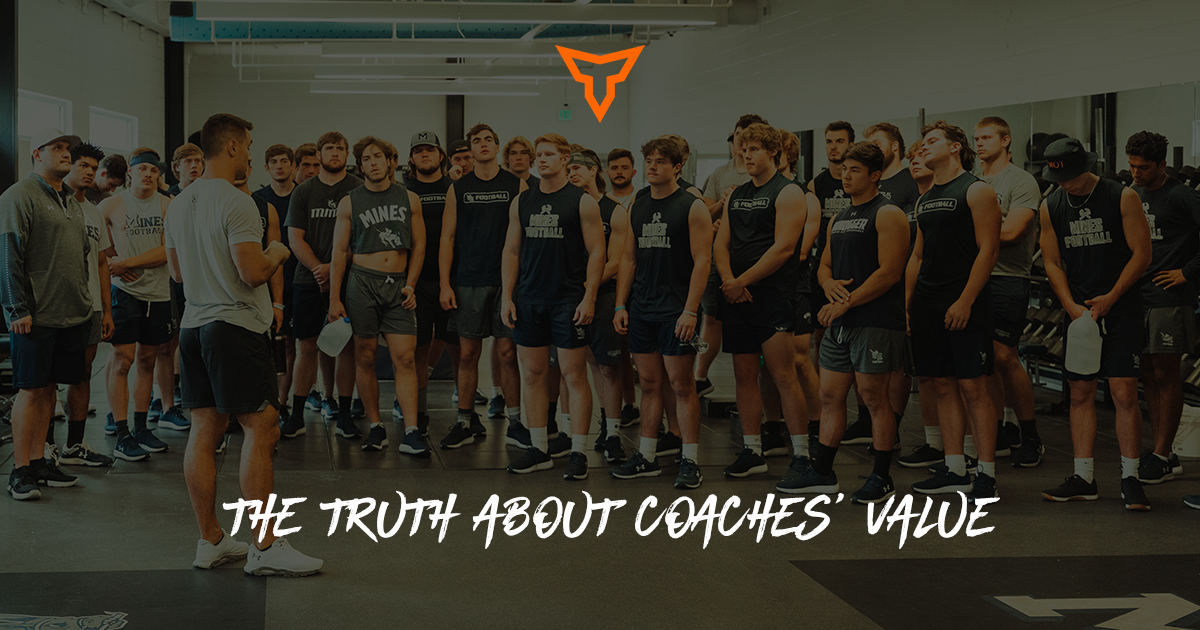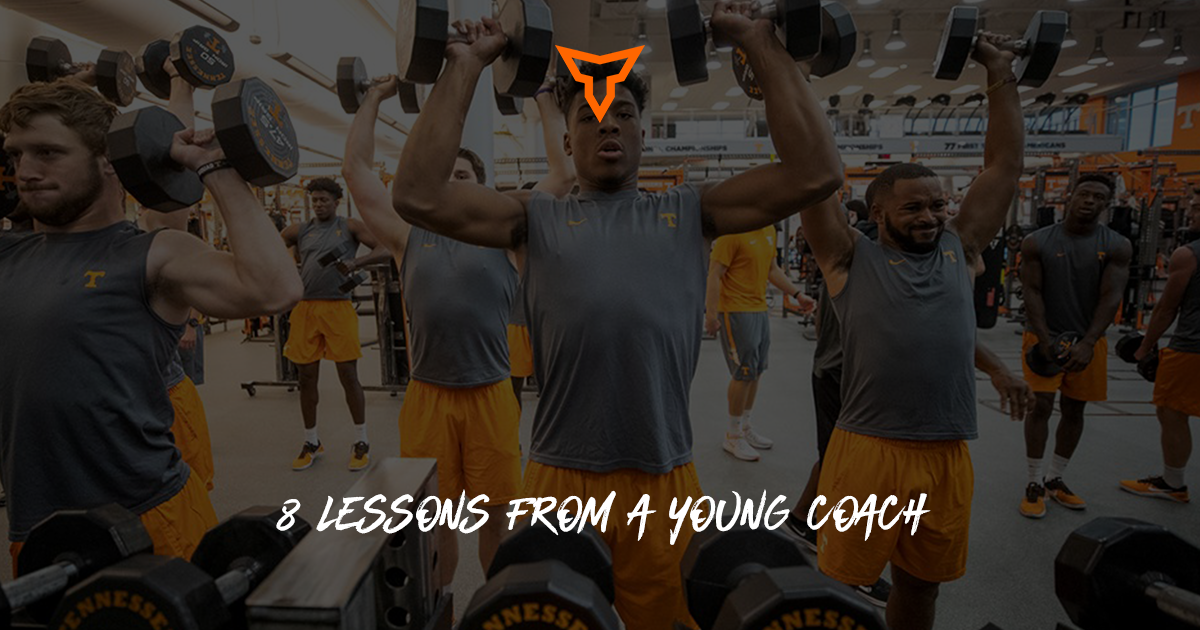Psychology Principles You Should Be Utilizing
As coaches, we often think of the physiology of high performance as extremely complex. This is why the main educational route for performance specialists is acquiring a degree in exercise science, exercise physiology, kinesiology, etc. As complex as physiology is, social interaction is higher in complexity. Physiological responses can be chaotic and cause and effect can become decoupled, but physiology can’t lie. We may attribute incorrect causal agents to training trends or have faulty methods of measuring, but physiology will always tell the truth. In our social interactions, however, it can be an entirely different story.
Athletes may not overtly lie to you, but they may implicitly or explicitly limit how much of themselves they reveal to you. They may not tell you the truth because they don’t want to hurt you, or they don’t want you to think they don’t appreciate you. They may hide their opinions because it goes against the orthodox team culture. Trauma and tragedy can repress deep desires. Societal norms can do the same thing. Athletes may not be able to tell you what they really need because they have never experienced it or it resides somewhere in the subconscious layer, unable to be retrieved. Some athletes are hyper-aware and know what makes them tick. Others don’t have a clue.
In the same way that athletes don’t know exercise as well as their strength coach, many times they don’t know the factors that underpin high-functioning groups and individuals. Because of this, it’s imperative to have an understanding of individual differences in psychological traits, motivations, and needs. Once you understand some basic theories, then it’s up to you to incorporate these frameworks into your program.
There are a multitude of different theories of human motivation and interaction, but for this article, I will focus on two that, in my opinion, are succinct, actionable, and in harmony with one another. These two models are self-determination theory and the SCARF model.
Self-Determination Theory
Self-determination theory (SDT) was formally conceptualized in the 80s by Edward Deci and Richard Ryan. The theory was born from studying extrinsic and intrinsic motivation. The theory was distilled down into three components of intrinsic motivation in humans: autonomy, competence, and relatedness. If you remember research done by Maslow (by the way, he never made a pyramid), the highest order of needs was “self-actualization”. These three components of motivation constructed by Deci and Ryan fall into this category of self-actualization. Self-actualization, simply put, is an individual's need for living a life that is internally consistent with one’s “self” without any external demands or pressures. Ryan and Deci posited that all humans need some degree of autonomy, competence, and relatedness to self-actualize.
Autonomy
Autonomy is the freedom to make decisions and to direct one’s life in the direction they see fit. Lacking this freedom can be hugely stressful. Entrepreneurs and retirees are two groups that come to mind when you think of those with sufficient autonomy. Imprisoned people and children, conversely, do not always have high levels of autonomy.
Competence
Competence can also be thought of as mastery. If you are highly proficient in an area, you can equate this to high competence. The entire point of competence is to have better control of outcomes. The better you are at something, the more likely it is that you can control the final product. If I am highly competent at basketball (I’m not. I’m very bad), then I have a higher degree of control over the outcome of the game.
Relatedness
Relatedness is the ability to love and be loved by others. It’s feeling connected to others in a meaningful way. People who are extroverted and have high interpersonal intelligence will have a much easier time establishing relatedness. People who are on the autism spectrum, even though relatedness is something they crave intensely, may struggle to navigate the social landscape and feel connected to others.
SCARF Model
The SCARF Model was formally developed by David Rock in 2008. It is also known as neuroleadership. Rock outlined five domains of social interaction: status, certainty, autonomy, relatedness, and fairness. These five domains were established through neuroscience research and help to describe behaviors that are perceived as either “threats” or “rewards”. When we perceive that these domains are fulfilled, our brain creates a reward response. When they are absent, the brain creates a threat response. While he framed these as characteristics of social interaction, we can also view them as needs. Since autonomy and relatedness have already been covered, I will only go over the three domains that haven’t been mentioned.
Status
Status is probably most accurately described as your position in your social hierarchies. This could be your friend group, your workgroup, or any other group that you are a part of. We’re biologically wired to climb social hierarchies, so if something happens that knocks us down a few rungs, we’re stressed out. If an embarrassing video goes viral, that can have a major impact on your social position. Maintaining or increasing our position of status in our groups can be a significant modulator of behavior.
Certainty
Certainty describes the ability to have reliable predictions concerning the future. Humans have a unique ability to access the past and to have valid forecasts of the future. Because of this tendency to project ourselves into a theoretical future, we like it when we know that our predictions are at least somewhat accurate. When the future is ambiguous or when we know that any prediction we make will most likely be wrong, the brain perceives this as a threat.
Fairness
This one is pretty straightforward. We like to be treated equally, especially among our peer group. If we sense that someone is getting special treatment for no reason, or that we are being treated poorly for no reason, this automatically registers as an incongruency in the brain and it perceives a threat.
It’s important to note that, while these factors are all critical in creating an environment that supports intrinsic needs, I don’t believe that they should be untethered. For example, giving an athlete complete autonomy in their training will more than likely end badly. I’ve experimented with giving vast amounts of freedom for athletes to self-select a large portion of their training, and as you might have guessed, it ended in disaster. Finding the right balance between the antagonists of these values (incompetence, constraints, privacy, humility, ambiguity, and inequality) is going to be the best path forward.
Implementation
I hate giving solutions to problems because the solutions I produce will rarely come close to a complete solution set. Identifying problems is easy, but creating an entire library of potential fixes is tough. For this reason, I will include only a few for each domain, and from there you can extrapolate other possibilities.
Autonomy
1. If two methods of training produce largely the same training effect or a certain section of the training session is of low importance, give the athlete an option. Dumbbell rows or cable rows? Honestly, who cares? Let them choose.
2. Set weight room standards together where possible. What is considered “on time” for the group? 15 minutes before the session starts? 2 minutes? We rarely think to include athletes in these types of decisions, but if you can come to an agreement on codes of conduct, they’re more likely to hold themselves to it. If they mess up, they have to take responsibility for their own standard.
3. Let them be themselves. If you have created standards of behavior together, everything undefined by the standards is merely opinion. You may not like some characteristics of your athletes, but that falls outside the purview of the job. Ultimately, if you can let them be authentic in front of you, the weight room will become a safe haven. There aren’t many of those around.
Competence
1. Use KPI’s or some other battery of tests to show objective improvement. Cognitive distortions can ruin an athlete’s perception of their competence, for better or for worse. Because of this, having a number that shows clear improvement goes a long way. Without any evidence to back up the notion that they are getting better, a large portion of athletes can become disinterested or even antithetical to your mission.
2. While objective measurements may rule in the modern world, much can be garnered from subjective measures. Including a questionnaire at certain intervals of the year can be immensely valuable. Ask questions that answer the big questions. Do you feel that this last block of training was helpful to your performance in your sport? If so, what do think helped the most? If not, what do you think we could implement to help? Gauging individual and group levels of perceived competence can fill in the gaps and highlight areas that may be missing from your formal assessments.
3. Use every resource available to you. Do you have a nutritionist? A sport psychologist? Maybe a contact inside academics? Use every single tool available and leave no rock unturned. Being a performance coach means you are invested in the totality of preparation for sport and life. Use every tool and encourage collaboration between departments.
Relatedness
1. Use psychometric personality testing or some equivalent. This can be complex like the Big Five or simple like the Five Love Languages. It also needs to be applicable and explanatory. These tests can help explain tendencies of an athlete to themselves, but it also explains the same information to the group. Understanding why someone is who they are is the first step to a meaningful relationship. It brings out the humanity in each of us and binds us together.
2. Make time for downtime, games, and laughter. Viewing every available minute as something that should be exploited for training purposes is a mistake in my opinion. This philosophy can turn training into a transaction, and transactional relationships are weak. Once the transaction is completed, so is the relationship. Make time with your athletes when you’re not actually doing anything except laughing, joking, or playing a stupid game. Remember that sincere laughter is the universal sign of psychological safety.
3. Be authentic, admit mistakes, and ask for forgiveness. A phony is easy to spot if you know what you’re looking for. Appearing infallible and might may seem like the best policy, but it’s not. Athletes need to know you’re human and flawed like they are. If you can be authentic and vulnerable, athletes will be inclined to reciprocate the behavior.
Status
1. Construct your weight room hierarchy with things that athletes can always control. If status is tied to sport performance or a record board, some number of athletes will always be on the bottom. If you make improvement or effort the measuring stick of your hierarchy, everyone will have a chance to win.
2. Highlight athletes who maintain the values of the weight room to a high degree. Staying after to clean up, coming in for extra work, being a team player, etc. All of these things rarely show up in our metrics, but they can be the glue that holds the machine together. What you talk about all the time becomes that which is most important. Everyone can uphold values. Reinforce good behavior when you see it by elevating these athletes among their peers.
Certainty
1. Communicate training schedules, create good routines, and make few changes. Almost everything about sport is chaotic. Schedules change, new information emerges, and unexpected obstacles appear. Unless you have a really good reason to invoke more chaos, training should be the rock that athletes cling to when things are uncertain. Having a reliable idea of what the day’s training will look like goes a long way for someone that doesn’t handle ambiguity well.
2. Be as consistent and even-keeled as possible in terms of your temperament. Not knowing if “grumpy coach” or “happy coach” will show up is detrimental to the athlete. Being consistent with your attitude is a stabilizing force. I won’t beat a dead horse because this point has been brought up enough. They should know what they’re getting every time they walk through the door.
Fairness
1. Have a detailed mental map for how you arrived at every individual-level decision. When athletes question why you did something, have a reason and rationale. If athletes on the same team are doing different programs, have an answer. If you spend more time coaching one athlete and not another, have an answer. If you have a reasonable explanation, the athlete will know you weren’t just being thoughtless. The disparities in your program need to be backed up with careful consideration. In essence, thinking critically about the individual needs of your athletes is the fairest thing you can do.
I’m not a psychologist or a sociologist, but by learning about some foundational truths about human motivation and asking for input from my athletes, I’m able to serve them better. Athletes need to be stronger and faster, but they also need to love the training process and love seeing you every day. Implementing these ideas with athletes boils down to this: Give athletes the tools to succeed, remove yourself from the training process as much as possible, and let them be.
Subscribe to our blog
Subscribe to receive the latest blog posts to your inbox every week.
Related posts

The Truth About Coaches' Value

8 Lessons From a Young Coach


